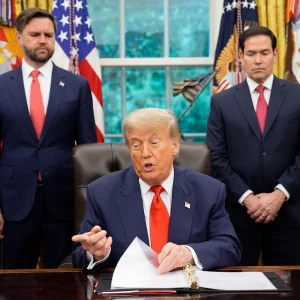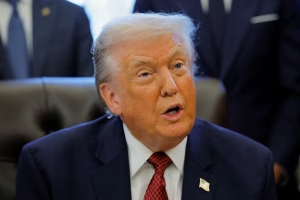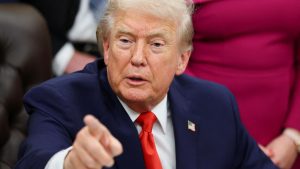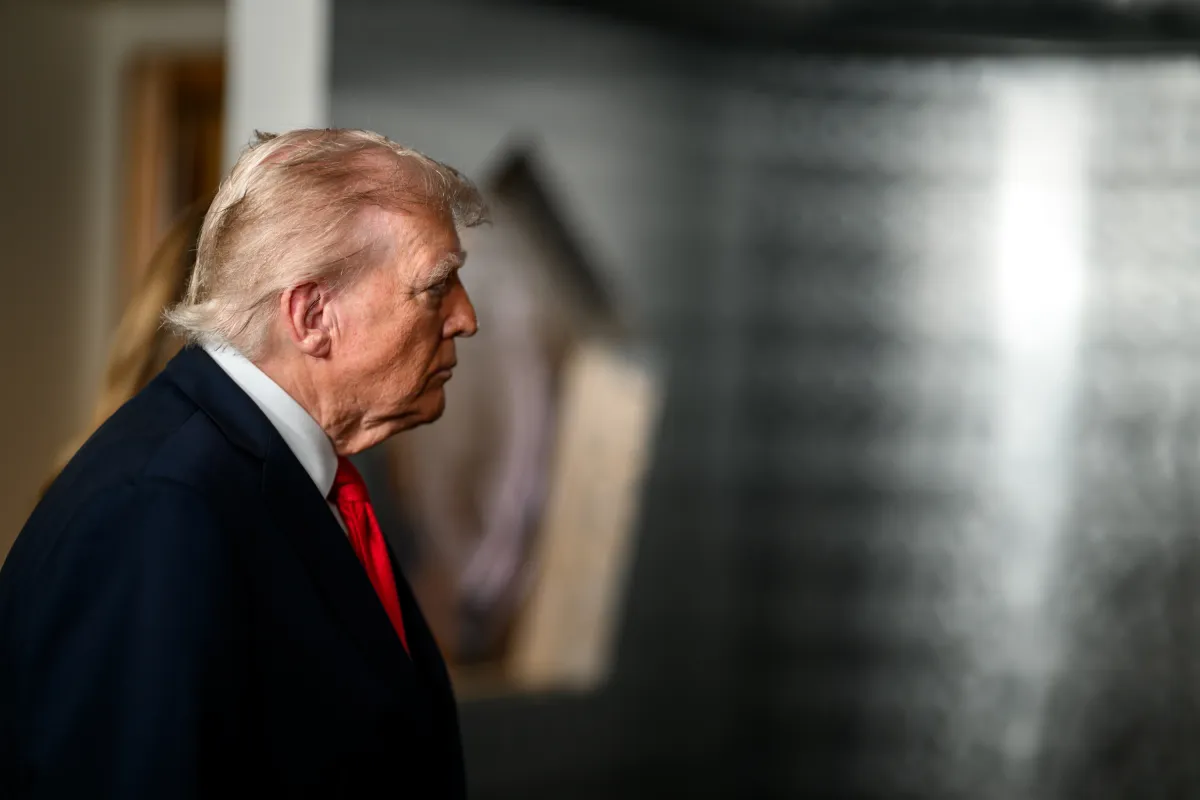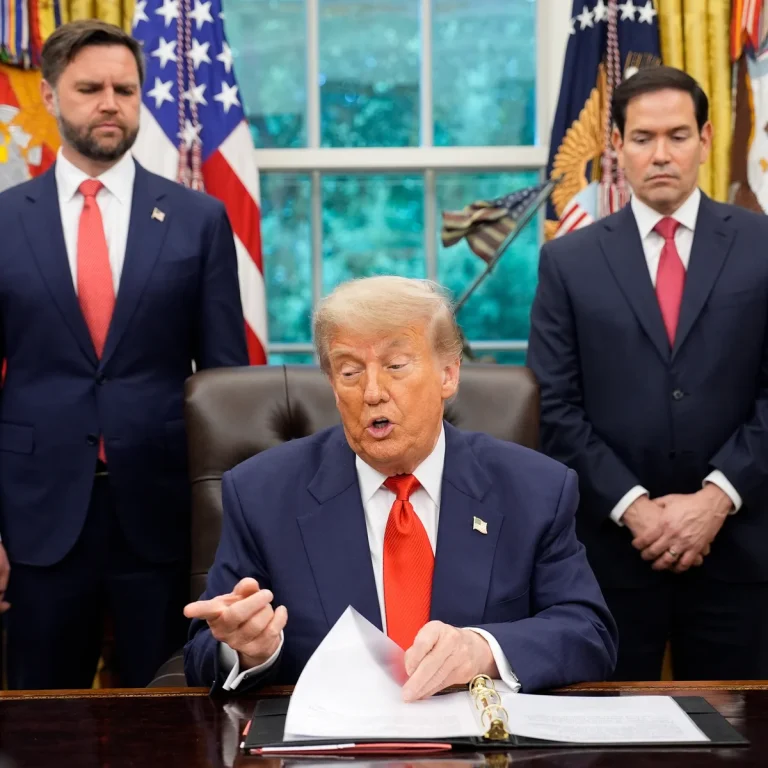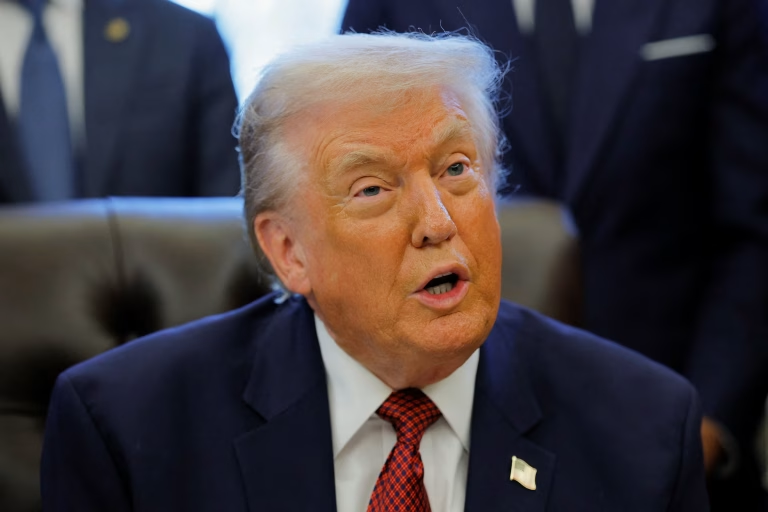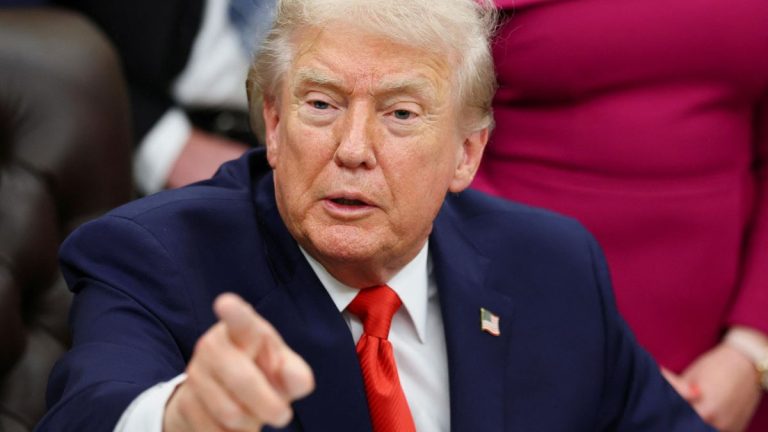Donald Trump has broken his silence regarding his recent hospital visit, setting the record straight after weeks of speculation and wild rumors about his health. The 79-year-old president, who has always prided himself on his energy and stamina, revealed that his October visit to Walter Reed National Military Medical Center was part of a comprehensive annual health check — one that included an MRI scan.
The admission came as Trump continues to dominate headlines not only for his policies and political maneuvers but also for the ongoing curiosity surrounding his physical well-being. The president’s health became a talking point earlier this year when he appeared in public with what observers described as a “large bruise” on his right hand. Photos quickly spread across social media, with critics alleging that his team had attempted to conceal it using heavy makeup.
A Health Condition Comes to Light
Adding to the speculation, the White House previously confirmed that Trump had been diagnosed with chronic venous insufficiency (CVI) — a condition that occurs when veins in the legs fail to circulate blood properly, often leading to swelling, discomfort, and discoloration. While the diagnosis is relatively common in older adults, Trump’s supporters and detractors alike took it as an opportunity to debate whether his demanding presidential schedule was taking a toll on his body.
Despite the chatter, White House Press Secretary Karoline Leavitt reassured the public earlier this month that Trump’s hospital trip was nothing more than a scheduled medical evaluation. “President Trump will stop by for his routine yearly check-up. He will then return to the White House. President Trump is considering going to the Middle East shortly thereafter,” Leavitt said in an official statement.
Still, the calm tone of the White House briefing did little to quiet the swirl of online speculation. Many questioned why the visit had not been disclosed earlier and why the president was undergoing additional tests only months after his reported April physical.
A Second Visit Raises Eyebrows
According to CNN, Trump’s earlier trip to Walter Reed in April was also described as his “annual physical examination.” But the October visit — which included an MRI scan — caught media attention because it appeared to go beyond the standard health check most presidents undergo.
Medical experts note that MRI scans are often ordered when physicians suspect an internal issue that other tests, such as blood work or X-rays, cannot detect. The Cleveland Clinic describes the procedure as one that “creates detailed images of the body’s internal structures using magnetic fields and radio waves.”
Speaking aboard Air Force One on Monday, October 27, Trump addressed reporters directly, offering an uncharacteristically transparent response about the tests he underwent. “I gave you the full results,” he said. “We had an MRI, and the machine, you know, the whole thing — and it was perfect.”
Deflecting Questions, Doubling Down on Confidence
When pressed about why exactly an MRI was necessary, Trump declined to elaborate. “Nobody has ever given you reports like I gave you,” he told the gathered journalists. “And if I didn’t think it was going to be good, either, I would let you know negatively. I wouldn’t run, I’d do something else.”
Despite the lack of a specific answer, the president appeared confident and upbeat about his health status. “The doctor said some of the best reports for the age, some of the best reports they’ve ever seen,” he added, smiling as cameras flashed.
Those close to Trump have long emphasized his high energy levels and relentless work ethic. Staffers often joke that the president “runs on very little sleep,” and that while most of the White House team is winding down for the evening, Trump is still on the phone with advisers, lawmakers, and international leaders.
From Health Rumors to Conspiracy Theories
Rumors surrounding Trump’s condition reached a fever pitch earlier this year when bizarre claims began circulating online suggesting the president had died. The unfounded speculation, which spread rapidly across social media platforms, was fueled by conspiracy theorists pointing to Trump’s reduced public appearances in the summer months.
The hysteria escalated after a series of ambiguous remarks by Vice President JD Vance, who told USA Today in August that he was prepared to step up “in the event of a terrible tragedy.” His comments were quickly taken out of context, spawning a flood of conspiracy videos and hashtags questioning whether Trump was truly alive and well.
Vance later clarified his remarks, insisting that his words were meant as a statement of readiness, not prediction. “I’ve had a lot of on-the-job training in the last 200 days,” he explained. “But the president is in incredibly good health. He’s got incredible energy. While most of the people who work around him are younger than he is, I think we all find that he’s actually the last person to go to sleep and the first person to wake up.”
Trump Fires Back at Doubters
As rumors continued to swirl, Trump took to his social media platform, Truth Social, to deliver his trademark blunt response: “NEVER FELT BETTER IN MY LIFE.” The post quickly went viral, drawing both cheers from supporters and skepticism from critics.
Those who know him personally say Trump’s response was classic — a mix of defiance and bravado, reflecting both his confidence and his frustration with what he views as media exaggeration. “He’s never been one to show weakness,” said one longtime aide. “If anything, he thrives on proving people wrong.”
Indeed, Trump’s health has been a topic of fascination for years. During his first term, his physician famously declared that he had “extraordinary stamina” and “excellent health,” though detractors questioned the credibility of that assessment. Still, for a man approaching 80, Trump remains unusually active, frequently golfing, traveling, and holding lengthy public events with minimal rest.
The Political Weight of Presidential Health
The health of U.S. presidents has always been a politically charged topic. From Franklin Roosevelt’s secret struggle with polio to John F. Kennedy’s hidden back problems and Ronald Reagan’s battle with Alzheimer’s after leaving office, the condition of America’s commander-in-chief is viewed as a reflection of stability and leadership.
For Trump, who is already seeking to cement his legacy with a second (and possibly third, depending on future legal debates) term, public confidence in his vitality is crucial. His campaign has leaned heavily on the image of Trump as a tireless, hands-on leader — one who can endure the physical and mental demands of office better than his younger rivals.
Political strategists say that by openly discussing his medical results and maintaining an active public schedule, Trump is attempting to control the narrative before it controls him. “The goal is to project transparency and strength,” one campaign insider explained. “He knows that every photo, every headline, every rumor about his health becomes ammunition for his opponents. So he’s tackling it head-on.”
A Closing Message of Strength
As the president wrapped up his comments on Air Force One, he left reporters with a parting remark that encapsulated his message: “If something was wrong, you’d know it. But everything’s perfect. Perfect results. The doctors couldn’t believe it.”
Whether his MRI was purely precautionary or part of a deeper evaluation remains unclear. But one thing is certain — Donald Trump is determined to show that he’s not slowing down anytime soon.
For now, the White House continues to emphasize that the president is “in excellent health and fit for duty,” while Trump himself insists he’s in “better shape than most people half my age.”
And as long as he remains in the public eye, the debate over his health — and what it means for his presidency — is unlikely to fade.

Emily Johnson is a critically acclaimed essayist and novelist known for her thought-provoking works centered on feminism, women’s rights, and modern relationships. Born and raised in Portland, Oregon, Emily grew up with a deep love of books, often spending her afternoons at her local library. She went on to study literature and gender studies at UCLA, where she became deeply involved in activism and began publishing essays in campus journals. Her debut essay collection, Voices Unbound, struck a chord with readers nationwide for its fearless exploration of gender dynamics, identity, and the challenges faced by women in contemporary society. Emily later transitioned into fiction, writing novels that balance compelling storytelling with social commentary. Her protagonists are often strong, multidimensional women navigating love, ambition, and the struggles of everyday life, making her a favorite among readers who crave authentic, relatable narratives. Critics praise her ability to merge personal intimacy with universal themes. Off the page, Emily is an advocate for women in publishing, leading workshops that encourage young female writers to embrace their voices. She lives in Seattle with her partner and two rescue cats, where she continues to write, teach, and inspire a new generation of storytellers.
